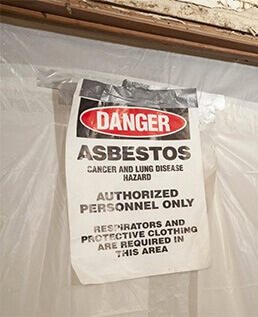What Is the Link Between Water Damage and Mold Growth
Posted in Flood & Water Damage, on June 28, 2024
Water damage and mold go hand in hand; both are very dangerous to properties and health. Property owners or building managers should know the relationship between water damage and mold growth. This article explains the causes and effects of water damage in Toronto, the development process of mold growth, and the link between them. We will also touch on health and safety implications, prevention, and mitigation strategies. Canada’s Restoration Services offers water damage restoration and mold removal in Toronto. So if you suspect you have mold growing in your home post-water damage, contact us today!
Read on to learn more!
Water Damage: Causes and Effects
.jpg) Common Causes of Water Damage
Common Causes of Water Damage
Water damage can occur in many ways, including burst pipes, leaky roofs, or flooding caused by heavy rainfall or storms. It might also result from plumbing problems, such as blockages or leaks, broken appliances like dishwashers or washing machines, or inadequate drainage around a house. Such problems need to be attended to immediately to avoid additional property damage and health/safety hazards.
Potential Consequences of Water Damage in Homes or Buildings
Unaddressed water damage can cause serious problems with any property. This can result in structural deterioration and electrical hazards, mold, and mildew. It might also damage the integrity of the building materials, creating expensive repairs and reducing a property's value. Therefore, it is important to address water damage problems so that such potentially negative consequences are avoided, and instead, safety and value are maintained.
Mold Growth: Understanding the Process
How Mold Spores Spread and Thrive
Mold spores are tiny fungi, and they are naturally occurring all around us, both indoors and outdoors. Their light weight makes them easy to be carried by air flow, hence easily diffused. If the mold spores fall on a surface with moisture and sufficient nutrition, it will initiate colony growth. Furthermore, high levels of moisture give a perfect proliferation chance to mold spores, making it an ideal breeding ground in both damp and humid environments. If not addressed by drying out, fixing moisture-related problems, or fixing the source of moisture, it may lead to very large mold infestations. The sources for fueling this humidity in any indoor space should be looked at and controlled in order to help prevent the spreading and multiplication of mold spores.
Conditions Favourable for Mold Growth
Mold is a type of fungus that thrives well in damp and humid places. In this respect, places damaged by water provide ideal growing conditions. The mold would then spread at very high rates if not checked, thereby posing health risks or even damage to buildings and furniture. Since water and poorly ventilated spaces further enhance the growth of mold, after a case of water damage, fix the source as quickly as possible, and implement proper ventilation in indoor spaces to lessen the potential for mold growth. Regular inspections and maintenance of plumbing, roofing, and other areas that may allow intrusion of water into a building will help to prevent mold problems before they start.
The Relationship Between Water Damage and Mold Growth
Water-damaged areas offer conditions ideal for mold because they provide both moisture and organic materials for food. If water has entered a building due to some type of event, such as flooding, leakage, or condensation, it can create an ideal environment where the mold spores would grow and multiply as touched on above. Such spores, landing on various surfaces and germinating, are able to develop into colonies of mold in fast cycles. Moisture enables mold to break down, actually consume, organic materials, which further damages wood, drywall, and even fabric. Hence, because it involves water, addressing water damage should be prompt and the drying of the affected area thoroughly to prevent the onset and reduce the impact that mold might have on your property is paramount.
Health and Safety Concerns
Mold infestations can further lead to serious health hazards, particularly in terms of respiratory problems, allergic reactions, and the worsening of underlying health conditions. Serious health impacts of exposure to mold should, therefore, be put into consideration, and caution should be exercised toward those factors that may mitigate such risks.
Typical symptoms of exposure to mold include cough, wheezing, throat irritation, stuffy nose, irritated skin, and irritated eyes. In addition, people already having conditions within the respiratory tract—like asthma—are found to have increased symptoms after being exposed to mold.
Identifying mold in indoor environments can reduce the health risks associated with mold exposure. Sources of moisture could be identified and reduced, ventilation improved, and dehumidifiers installed to maintain ideal humidity inside buildings. In addition, frequent inspections with necessary measures on plumbing, roofs, and windows would prevent water intrusion and thus reduce the formation of mold.
However, keeping a living or working space clean and dry can considerably reduce the chances of mold formation. Other ways to prevent mold from forming include using cleaning products that inhibit mold growth.
This makes it imperative to be alert and proactive about mold issues, as long-term exposure to molds can have serious health implications. By using these prevention techniques, people can create healthier indoor environments and reduce potential health risks.
Addressing Water Damage and Mold Growth with Canada's Restoration Services
Water damage and mold growth are very much linked. That means, if you really want to prevent the growth of mold, you need to deal with water damage as quickly as possible. If you reside in Toronto and think that you might need professional help with water damage restoration or mold removal, consider contacting Canada's Restoration Services for assistance. Our skill and comprehensive services can be very crucial in protecting your property and well-being alike from the dangers associated with water damage and mold growth. Take the initiative to resolve these various issues and make your indoor space safe and healthy for you and your loved ones.







